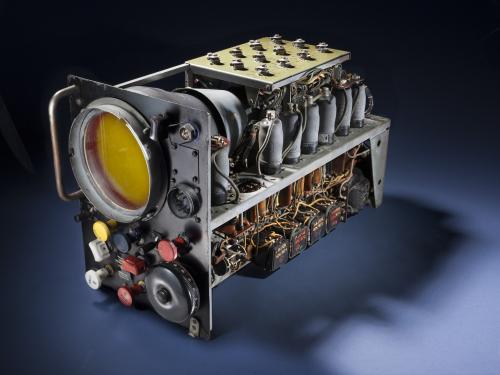

Stories of daring, stories of technological feats, stories of prevailing against the odds ... these are the stories we tell at the National Air and Space Museum. Dive in to the stories below to discover, learn, and be inspired.
Showing 1 - 10 of 17

September 12, 2024
It's a bird? It's a plane? Its a guy pretending to be a bird?? We have a very odd aircraft in the collection.

July 26, 2022
Canadians Bill Lishman and Joe Duff founded Operation Migration in 1994 to teach captive-reared birds to migrate by following the Cosmos Phase II ultralight aircraft.

May 08, 2020
Curator Russell Lee explores a lesser-known form of World War II aviation: the fighting glider.

June 05, 2019
The D-Day invasion relied on paratroop and glider landings the day before -- in moonlit darkness. In this blog, we explore the key technologies used to locate drop zones and landing zones under cover of darkness.

December 20, 2017
Conservation work is continuing on the Smithsonian’s National Air and Space Museum’s collection of traditional Chinese paper kites at our Emil Buehler Conservation Lab.

December 05, 2016
In 1876, after the dust from the United States’ first World’s Fair and Centennial Exposition settled on the grounds of Fairmount Park in Philadelphia, the Smithsonian Institution’s collections expanded exponentially. Sixty boxcars filled with art, mechanical inventions, and other materials from many of the 37 countries who participated in the Exposition pulled into Washington, DC as gifts for a brand new museum.

June 16, 2016
Among the treasures found within the special collections of the DeWitt Clinton Ramsey Room, a branch of the Smithsonian Libraries located at the National Air and Space Museum, is a collection of oversized scrapbooks with an interesting and complicated history. Originally bound in one volume, William Upcott’s Scrapbook of Early Aeronautica captures the history of lighter-than-air aircraft and aeronautics from 1783 to the 1840s through a rich collection of newspaper clippings, articles, illustrations, and letters.

June 30, 2015
In this four-part series, curators Russ Lee and Evelyn Crellin take an in-depth look at the Lippisch DM 1, an experimental German glider. At the conclusion of Part 3, the glider was tested in the National Advisory Committee for Aeronautics (NACA) Full-Scale Wind Tunnel. In this final post, Russ and Evelyn connect those early tests with the world's first delta wing aircraft. We have found no written confirmation that Convair incorporated the NACA data from the DM 1 directly into their groundbreaking work to design and build the first jet-propelled delta wing aircraft.
June 23, 2015
In this four-part series, curators Russ Lee and Evelyn Crellin take an in-depth look at the Lippisch DM 1, an experimental German glider. At the conclusion of Part 2, U.S. Army General George S. Patton ordered the students to resume construction of the glider at the Prien Airport. A number of American visitors arrived to witness the construction of the DM 1, including the famous American pioneer of aerodynamics Walter Stuart Diehl.

June 16, 2015
In this four-part series, curators Russ Lee and Evelyn Crellin take an in-depth look at the Lippisch DM 1, an experimental German glider. At the conclusion of Part 1, construction of the glider had begun in August 1944 by students of the Flugtechnische Fachgruppe (FFG). Construction of the experimental glider was derailed dramatically on September 11 and 12, 1944, when Allied bombers struck Darmstadt, including the building that housed the FFG D 33 project.